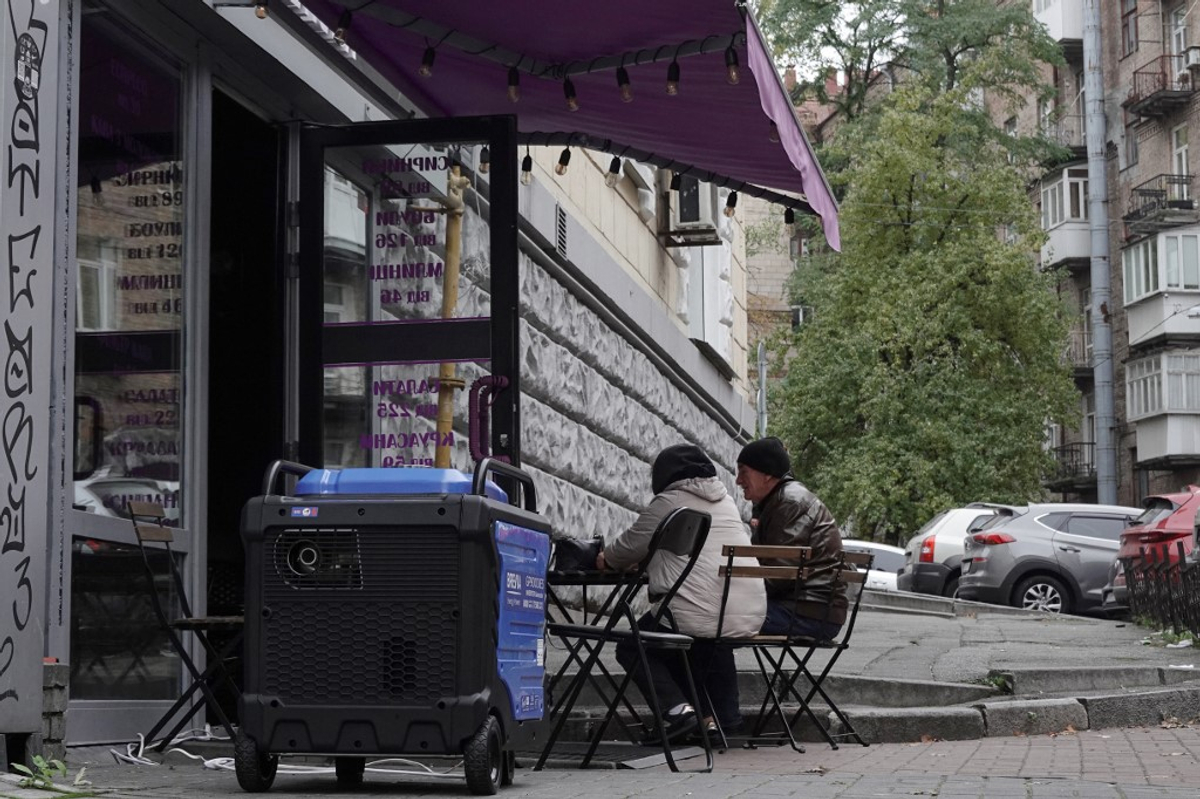Copyright kyivpost

The National Bank of Ukraine (NBU) has stated that inflation expectations across economic groups remain uneven, despite an overall slowdown in price growth, underpinning one of the key challenges to restoring price stability. According to the central bank’s October “Inflation Report,” households, businesses, and financial institutions continue to hold differing views on future inflation. While analysts and banks have slightly improved their outlooks, household expectations remain markedly higher. The report adds that “the share of CPI components with price growth above 10% (the so-called attention level) remains at 56% of all components,” even though it has decreased slightly. The NBU’s inflation target is 5%, while consumer inflation slowed to 11.9% year on year in September. According to the NBU’s estimates, this downtrend continued in October. Google Trends data indicate that public interest in the topic of inflation remains elevated, suggesting continued sensitivity to price changes, the NBU wrote. Core inflation in Ukraine remains sticky Ukraine’s central bank is concerned that the consumer inflation shows a fast downward trend, whilst core inflation does nt. Core inflation excludes volatile prices – and this one is sticky. “Although the growth in consumer prices decelerated faster than projected in the NBU’s July Inflation Report, this was primarily driven by an increase in the supply of vegetables due to the harvest being larger than last year,” the report says. “On the other hand, core inflation declined at a slower pace (to 11.0% year on year in September). The underlying price pressure persisted, particularly as businesses continued to incur high costs of labor and energy. As a result, the growth rates of prices for a number of core inflation components either declined slowly (processed foods) or did not decline at all (services).” The central bank expects inflation to decline gradually to 9.2% by the end of 2025 and to reach the 5% target only by late 2027, assuming a stable security and energy environment. However, uncoordinated expectations may prolong the disinflation process, especially if external shocks or budget spending pressure re-ignite price volatility. NBU’s key rate hold sparks criticism from economists Ukraine’s central bank kept its key rate at 15.5%, while the NBU’s governor Andriy Pyshny said that inflationary pressures had strengthened as a result of strikes on the energy sector and higher budget spending. The NBU has also modestly decreased Ukraine’s real GDP forecast from 2.3% to 2% to 2.1% to 1.9% for 2025 – showing the economy is still slowing down because of the burden of Russia’s full-scale invasion of Ukraine. The forecast for 2027 remains unchanged at 2.8%. But the NBU’s decision to hold the key rate unchanged has drawn criticism from some independent macroeconomists. Vitaliy Vavryshchuk – ex-head of the NBU’s financial stability department and current head of the macroeconomic research department at the ICU Group, said: “It’s one of those cases when the NBU’s decision and communication don’t inspire confidence or calm – instead, they make observers uneasy and search for hidden motives behind the stance. It’s hard to call that a data-driven monetary policy,” he wrote on Facebook. Vavryshchuk clarified in the comments that inflation, foreign exchange reserves, and external financing all look better than the NBU projected in July which, in his view, opens the door for a rate cut. ICU previously published a macro forecast where its analysts wrote: “we see no significant risks that may derail disinflation.” “The outlook for inflation also remains broadly favorable with the annual CPI likely to decline in every single month at least until March 2026. Judging by the current inflation and mid-term inflation outlook, the start of the monetary policy easing cycle is becoming overdue,” Although Bloomberg previously reported that the International Monetary Fund (IMF) was putting pressure on the NBU to devalue the hryvnia, Pyshny also said that the NBU’s primary focus is financial stability. “During our work with the International Monetary Fund, our focus remains on price stability and external resilience. But the final decision remains with the central bank, which has responsibility. We thank our colleagues for their expertise… but to say that we are in the final stage of discussions is too early,” Pyshny said during the NBU’s briefing. Inflation risks in Ukraine remain – such as energy strikes, labor shortages The concern on the foreign exchange market – unvoiced by the NBU directly, but something that the central bank keeps in mind – remains the key challenge to any shock or gradual devaluation. Ukraine is in a unique situation – no one has written any handbook on how to deal with the protracted pressure of the full-scale war on the economy. The sticky core inflation is another concern, rooted in the slower, but stable increase in wages due to a lack of workforce and rising business costs. This might keep rising since Russia is striking Ukraine’s energy grid again, forcing businesses to spend on energy and leading to lower economic activity. These are two reasons that cause concern for NBU First Deputy Governor Sergiy Nikolaychuk. Ukraine had been “somewhat lucky with the vegetables,” he wrote. Larger harvests than last year and lower price pressure in the fruit market eased prices. Attacks on energy infrastructure are another downside risk. “Did you seriously expect back in July that we would lose 60% of gas production and need an additional Hr. 300 billion ($7.3 billion) in defense spending just this year?” Nikolaychuk said in comments. Dragon Capital Chief Economist Olena Bilan supports the NBU’s arguments. “Part of the list you mentioned are actually consequences of the same phenomenon – a larger volume of external funding. Inflation is now much lower than forecast mainly due to the volatile component, so that’s no reason to react,” she wrote. “Two factors will increase fundamental inflationary pressure – one of them unpredictable (energy infrastructure strikes),” she added. NBU warns against premature easing Meanwhile, the NBU planned its first key rate cut in Q1 2026, but warned that it might be postponed. “Given the amplification of pro-inflationary risks, keeping the key policy rate at its current level (15.5%) is appropriate under the current circumstances. This will help support demand for hryvnia savings instruments, keep inflation expectations under control, and safeguard the sustainability of the FX market, which is important for achieving price stability,” the Inflation Reports says. Nikolaychuk previously told Kyiv Post in an interview that the war risks remain the key game-changer for the economy. An energy deficit, migration and workforce deficit – all results of Russia’s devastating military actions against Ukraine – have caused businesses to pay more for energy and talent acquisition, passing these costs on to consumers.



